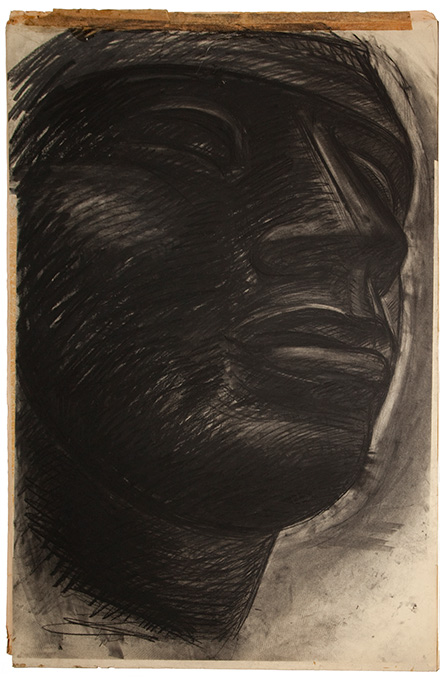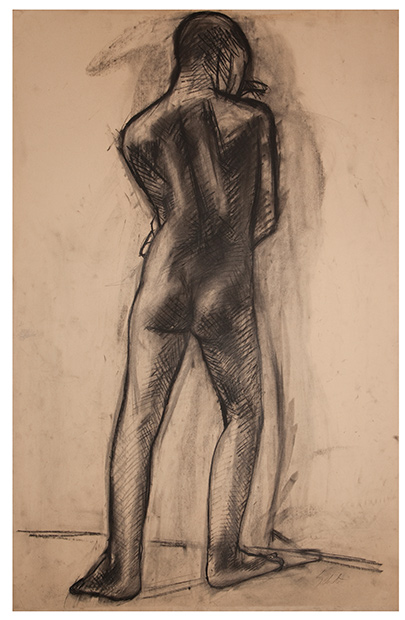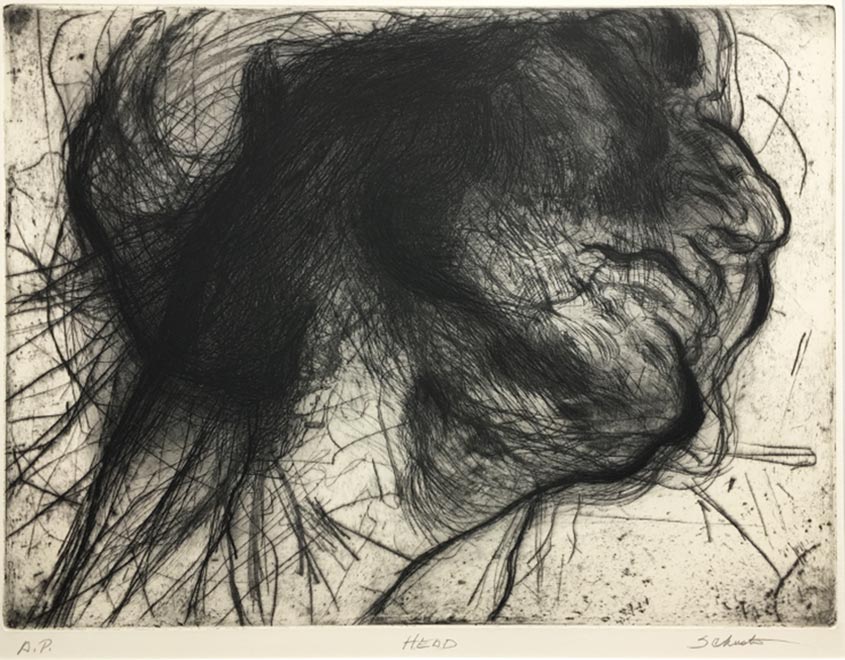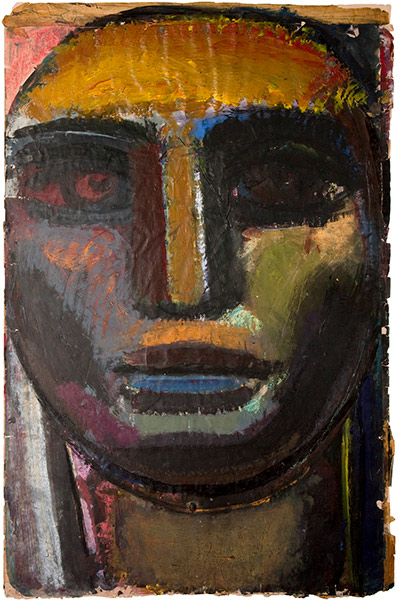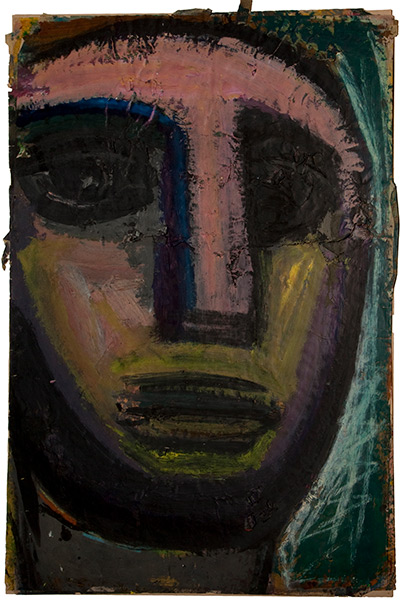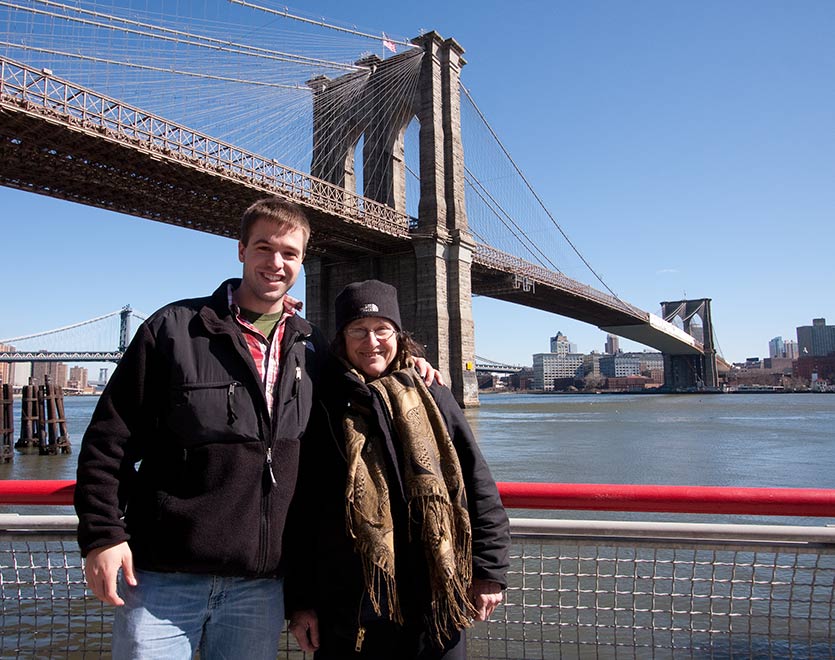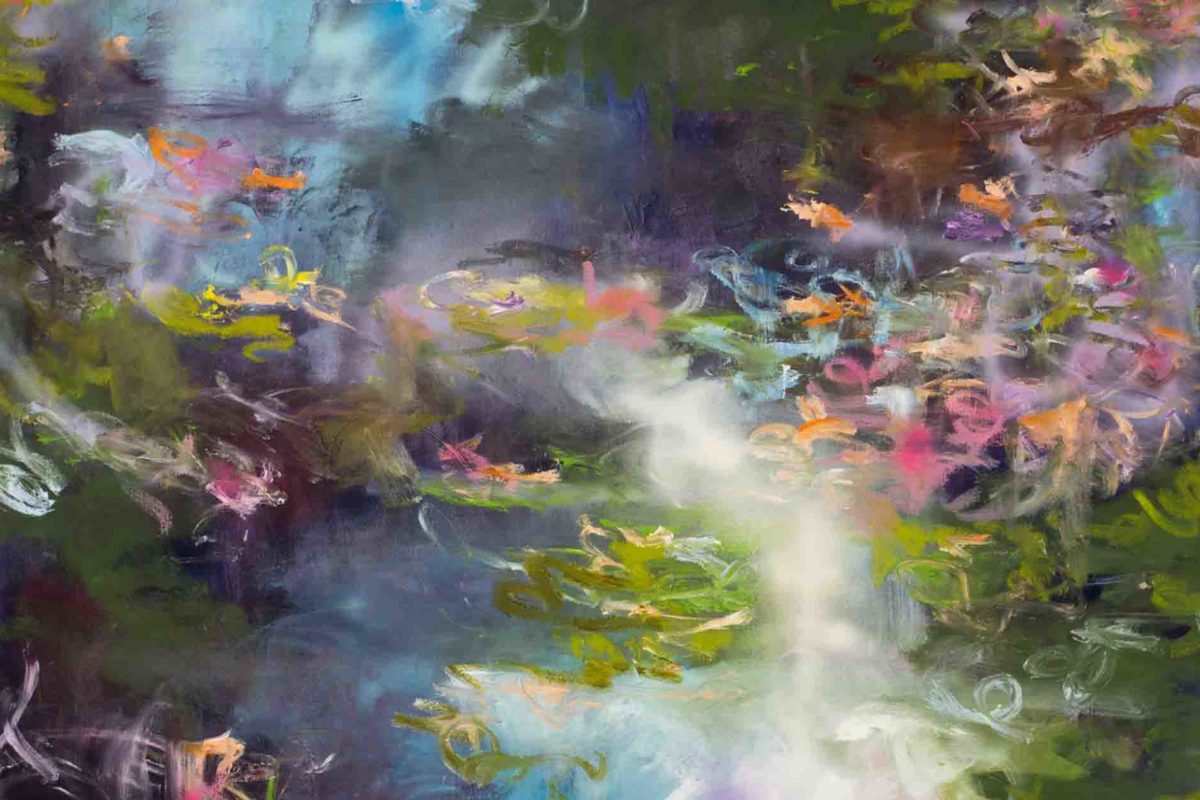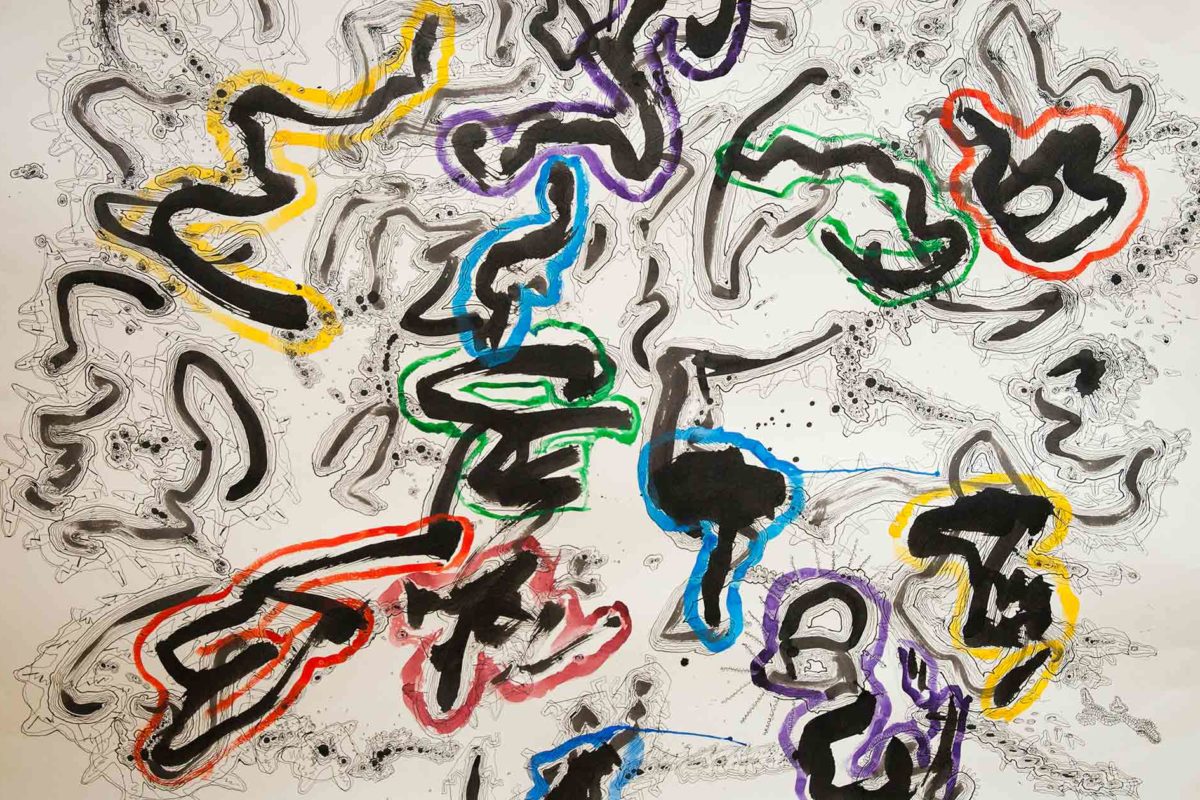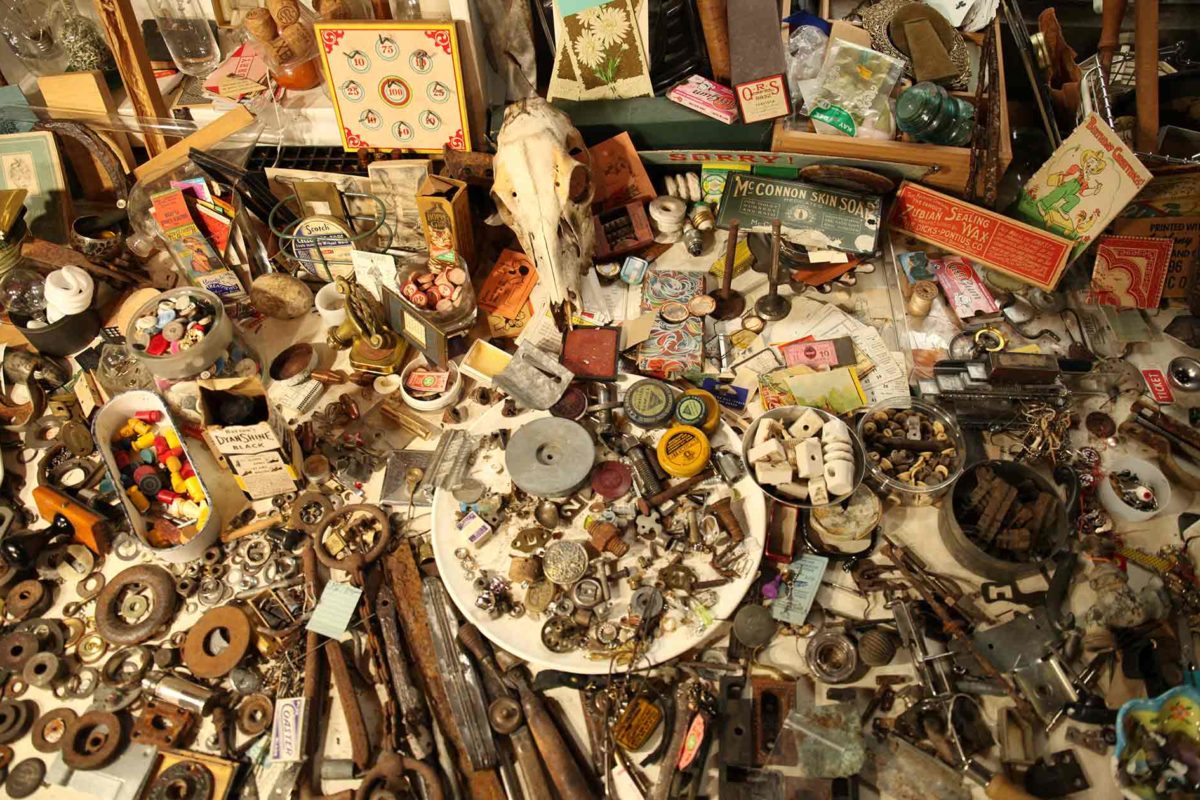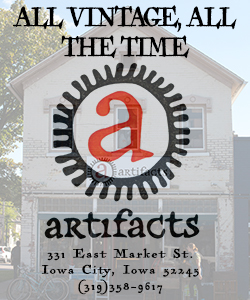“Every child is an artist. The problem is how to remain an artist once we grow up.”
– Pablo Picasso
We can all recall a time when a box of crayons and some blank paper captivated us as we made colorful lines, squiggles, and dots across the page. For many of us, the youthful freedom of art-making was a fleeting stage, replaced by school work, sports, and other extracurricular activities. Yet, there are those who retained this childhood fascination, embraced it, and forged their way to a creative career. We owe a great deal to these visual artists who have oftentimes sacrificed many creature comforts in order to, in the words of Robert Rauschenberg, “be a witness to [their] time in history.” One such artist who exemplifies this lifestyle is Sylvia Schuster.
You may not have heard of Sylvia, much by way of her own design. Sylvia makes art for herself and has never been inclined to promote or sell her work – outside of times when she needed money for more supplies and the barest of essentials. Much like Picasso, Sylvia is a creative genius, freely morphing between the artistic realms of drawing, painting, printmaking, and sculpture, to produce a substantial body of impressive work. Similarly, Sylvia has an artist’s view of society and is not tethered by the canons of contemporary culture. Here the similarities with Picasso end; while Picasso was an overt, unavoidable billboard persona, Sylvia could be overlooked as a rolling stone splashing her ink on large sheets of paper held down with paint cans beneath the Brooklyn Bridge. Opportunity had not passed her by; in fact, major galleries in New York vied for her work. It would be simple – she would make a painting, sell a painting and make another one, sell it and so on. Yet, Sylvia had no interest in copying herself, nor in making millions from her art – she simply wished to make her art. And that is what she has done for 70 years.
 It all began when she was just 2 years old, and her nursery school teachers allowed her to draw during nap time every day. Her parents were extremely supportive and permissive, allowing Sylvia to explore her boundaries as a young child. She recalls running between the legs of Auguste Rodin’s Burghers of Calais sculpture, hanging from the polished bronze of Rodin’s Gates of Hell, and mimicking the Thinker who adorns its threshold at the Philadelphia Museum of Art. As a 9 year old, she would take two subways and a bus to get to West Philly to visit the Barnes Collection every Saturday, prior to the mansion being open to the general public. There she would select a specific work by Renoir, Matisse, Modigliani and would sit down and study it for hours.
It all began when she was just 2 years old, and her nursery school teachers allowed her to draw during nap time every day. Her parents were extremely supportive and permissive, allowing Sylvia to explore her boundaries as a young child. She recalls running between the legs of Auguste Rodin’s Burghers of Calais sculpture, hanging from the polished bronze of Rodin’s Gates of Hell, and mimicking the Thinker who adorns its threshold at the Philadelphia Museum of Art. As a 9 year old, she would take two subways and a bus to get to West Philly to visit the Barnes Collection every Saturday, prior to the mansion being open to the general public. There she would select a specific work by Renoir, Matisse, Modigliani and would sit down and study it for hours.
“I was mesmerized by the wealth of painting there. I learned everything I had to know about painting in those years. I was just completely involved with the pictures.”
With the support of her parents, she enrolled at Fleisher Art Memorial, and spent 3 hours there a day, nearly every weekday, from 7th grade through high school graduation. On the weekends, she attended further art classes at the Pennsylvania Academy of Fine Arts. There, working from live models, she was exposed to the human form and thus began her habit of daily creation. Her art school commitments were at the expense of other extracurricular activities.
“You must absolutely live your life around art. That’s what you must do. You’ve got to push everything away because there’s no time. You know, there wasn’t enough time to go to Girl Scouts. My parents agreed. I told them that one night. I said, “I can’t do all these other things.” I wanted to concentrate and focus on art, and it was impossible for me. I had to quit.”
She was recognized for her talents with a National Scholastic Award when she was in high school. From there, the accolades, awards, scholarships continued to come. Her long list of academic accomplishments includes a scholarship to the Rhode Island School of Design, a Fullbright Grant and Prix de Rome Scholarship at L’Academia de Bella Arti in Rome, and a M.F.A. from Cranbrook Academy of Art in Michigan. Additional studies were pursued at Boston University at Tanglewood, the University of Iowa, New York Studio School, Creighton University, the University of Nebraska at Omaha, and the University of Illinois.
Building upon her varied experiences, Sylvia developed her own style, a conglomeration of drawing, painting, engraving, and sculpture that continued to evolve throughout her career. While her subject matter has included landscapes, bridges, still lifes, and the human form, the details of the face and head have occupied the majority of her attention and time. Her use of line and contrast to create volume and depth are unrivaled, producing visceral, often androgenous, ineffable profiles.
After graduating from Cranbrook in 1967, Sylvia had the desire to do printmaking. She wrote a letter to the head of the University of Iowa Printmaking Department, Mauricio Lasansky, expressing her desire to learn the etching and printmaking process.
“I wanted to do printmaking. I heard that in Iowa there was not a printmaking department . . . it was an empire! It was a huge thing to go there. The best printers went there.”
Lasansky quickly wrote back and, after seeing her work, offered her a scholarship to come to the University. Coming to Iowa was a major shock to the system after living in major metropolitan cities her entire life. The darkness, unfamiliar smells, noiselessness, and lack of vertical structures was almost more than she could bear. Yet, printing became an obsession for Sylvia, and soon she was producing hundreds of prints and selling them for next to nothing to whoever would buy them so she could cover the costs of more art supplies.
“The whole thing was very tactile—it was a little bit like cooking. Like a combination of things—definitely sculpture and drawing. It combined everything that I love. I was just a natural. I couldn’t leave the print room. I was in there every night. It closed at 1:30 am and I used to climb in the window at 2:00 am sometimes to see if my plate was still in the acid or to check something or just to be in there.”
“Art supplies were very hard to pay for. That’s where I started eating less and less and living on junk—Milky Way, 3 Musketeers. I went to the print room and would line them up. I got them out of the machines. I got Diet Coke then, and that’s what I lived on. When I went to the store, which was rare, I would get some hot dogs. How I lived on that I don’t know, but I have a lot of energy all the time.”
Eventually, Sylvia felt like a change and started making collages, recycling her own drawings into abstract heads and figures. This radical departure from her previous work at Iowa drew attention and bewilderment among her supporters and colleagues. She missed the anonymity she once had when living in New York. Therefore, she decided it was time to return, and thus began her pilgrimages between New York and Iowa City. She attended the New York Studio School for a period of eleven years from 1974 – 1985. There she had the freedom to draw, paint, and collage without outside scrutiny.
“It was a combination of sculpture and drawing. That’s what I did. I was doing sculpture on paper, and I slammed into that paper with brush and ink. I always worked that way. I worked furiously and fast and threw things together. Sometimes they worked, and sometimes they didn’t. I just kept throwing things together—collages, drawings, figures, paintings; whatever supplies I had, I used them all. I ripped it apart and put it back together in different ways.”
However, New York was not without its sources of stress. At that time, New York was undergoing a sensational and cultural explosion of art, music, sex, and drugs, while at the same time coping with the fallout – the AIDS crisis. The art community was hit particularly hard and Sylvia lost many close friends. Fleeting relationships, drug use by former partners, and the death of close friends instilled a fear of HIV that took years to overcome. In fact, it was this fear that coaxed her out of New York once again and lead to a number of short stays in Florida, Creighton University, and Northern Illinois University, where she worked mostly on prints to try to pay her bills. While Sylvia had always lived a frugal life, her drawings were her only possessions and she took good care of them, storing them in apartments and climate-controlled storage units in Queens, Manhattan, Washington D.C., and Iowa City. 
“They are part of me. I remember them. When I look through my drawings in the warehouse, I recognize them. I know when I did them. They are my friends. It is very difficult to part with them.”
She tried to make ends meet by waitressing which had always been her fall back. For years, she had stored her work in storage facilities and low-rent apartments in the less desirable parts of town; however, throughout the decades, those areas had revitalized with resultant escalating rents. She continued to make art after her long days waitressing.
“I did the morning shift and went right from there to Manhattan Mini Storage. I did collages there at night. I had gone to the bridge many times. The Brooklyn Bridge was like a cathedral to me. I had done many drawings of the bridge. Some of them I decided weren’t so good, so I started cutting them up, making collages in the warehouse. I could not use ink, or chalk, or paint. I couldn’t get anything dirty. It was stone floors again, very quiet. There were high ceilings and rooms that were locked. Nobody was there, and I went every day after I waitressed. I used it as a studio. The people who worked there knew me. They didn’t think there was anything bad. They saw me cutting up paper. That’s all they thought—that I cut up paper. They didn’t have any idea what I was doing. I did a whole lot of collages.”
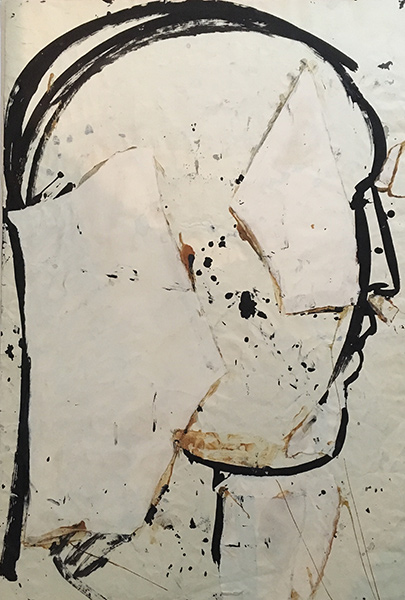 Despite her efforts, there was no way she could get out of debt with her waitressing alone.
Despite her efforts, there was no way she could get out of debt with her waitressing alone.
A chance meeting with a fellow artist and good samaritan evolved into a mutually beneficial relationship that resulted in schusterdrawings.com and the circulation of a lifetime of Sylvia’s work. Matt Wagner, who works for the city of Iowa City, had witnessed Sylvia on a number of occasions carrying stacks of drawings throughout town. He was struck by the beauty of her work and inquired as to where she was selling it and how he could obtain more information. To his dismay, Sylvia had no website, cell phone, social media presence or the like. Matt introduced Sylvia to the 21st century with cell phones, texting, microwaves, the internet and Facebook. Matt’s talents were put to use photographing Sylvia’s work, often on the pavement or floor as she flipped through her drawings. He encouraged her to share her work with the public, something she had done on a very limited basis in the past. Her finances were in disarray. Several trips were made between Iowa City, New York, and Washington, D.C. to clear out storage spaces and apartments, combining all of her work in one location.
The dissemination of her drawings has resulted in a nationwide interest and demand for her work. Collectors who never had access to her work before are finding a treasure of work that has spanned five decades. A complete history of her work, from her charcoal drawings, to her prints, to the collage heads repurposed from previous ink drawings, is now readily accessible. While Sylvia’s primary focus has always been making her art, at 74, she is feeling the stress of her life’s work and would like recognition for her efforts. With the help of Matt Wagner, her life story is being chronicled through interviews, videos and possibly a documentary, in the hopes that her work will receive the recognition it truly deserves.




